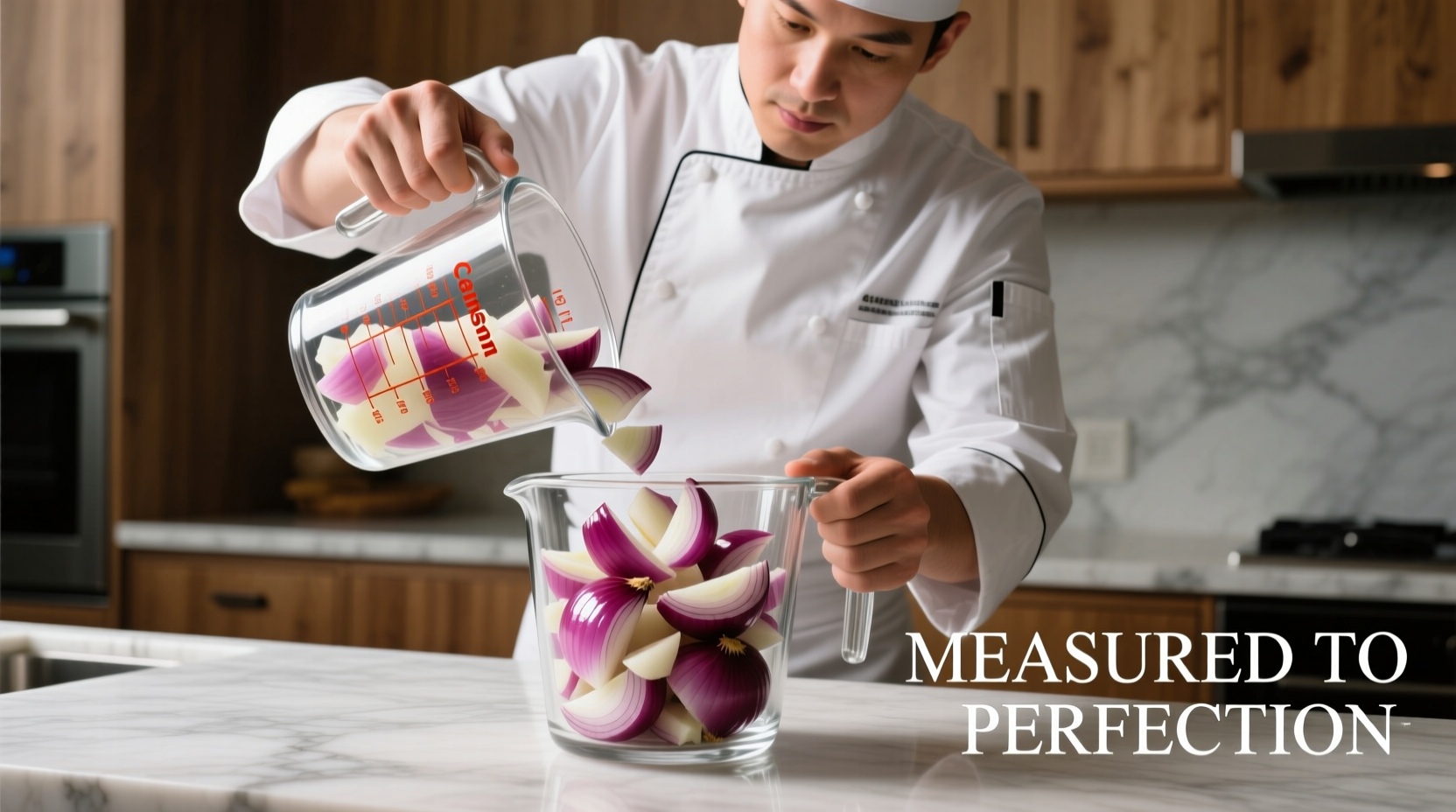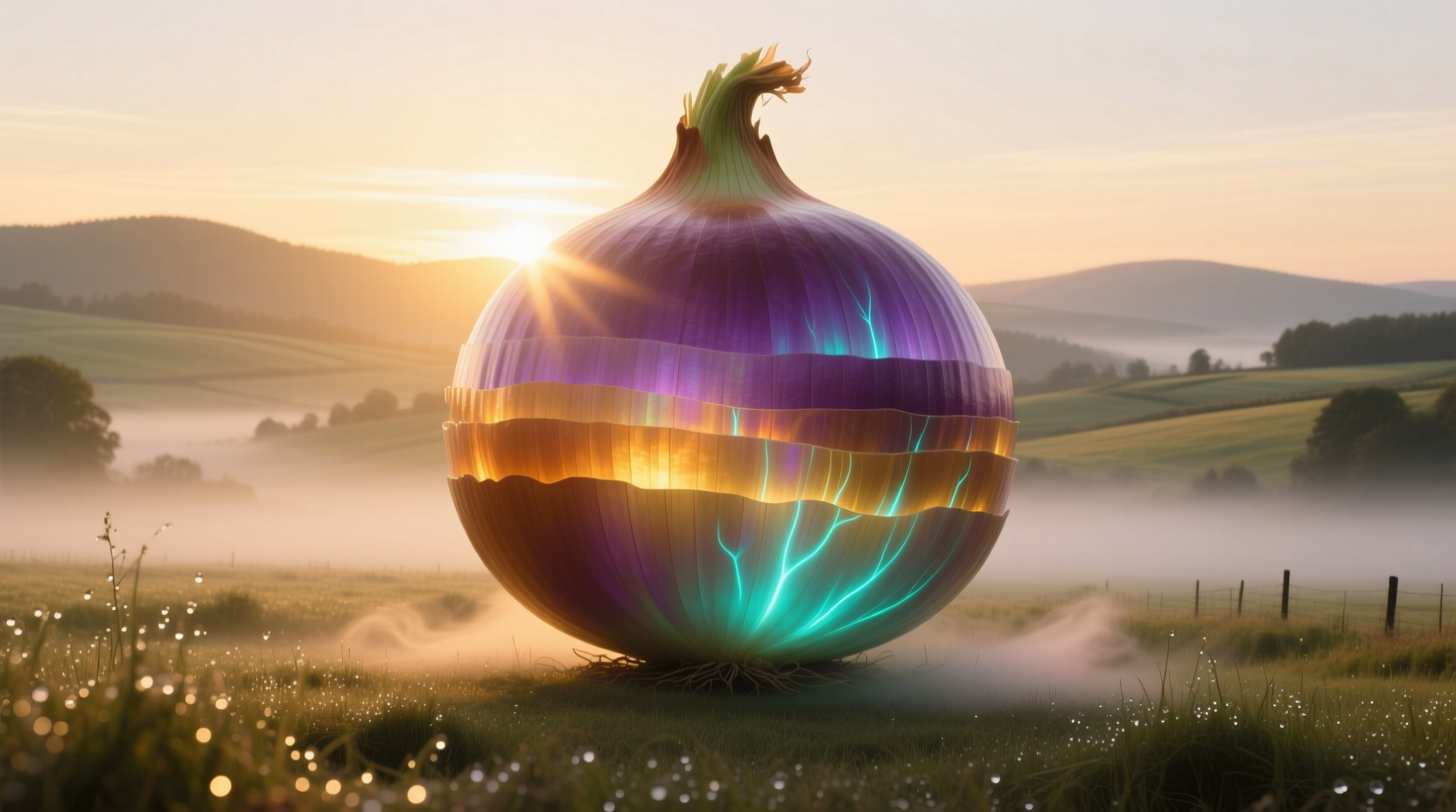Ever stared at a recipe calling for "one giant onion" and wondered exactly what that means? You're not alone. Many home cooks face confusion when recipes use vague size descriptors instead of precise measurements. Understanding what constitutes a "giant" onion and how to adapt when your onion doesn't match the recipe's expectations can transform your cooking experience from frustrating to flawless.
Why Recipe Measurements Cause Confusion
Recipe developers often assume home cooks have access to standardized produce, but onion sizes vary dramatically based on variety, growing conditions, and season. What one chef considers "giant," another might call "medium." This inconsistency leads to dishes that are either under-seasoned or overwhelmed by onion flavor.
Decoding Onion Sizing Standards
The USDA provides standardized size classifications for onions, though these aren't always reflected in everyday grocery shopping. Professional kitchens rely on weight and volume measurements rather than vague size terms. Understanding these standards helps you become a more precise and confident cook.
| Size Designation | Diameter | Weight | Chopped Volume | Common Culinary Uses |
|---|---|---|---|---|
| Small | 2-2.5 inches | 4-6 oz (115-170g) | 3/4 cup | Salads, garnishes, single-serving dishes |
| Medium | 2.5-3.5 inches | 6-8 oz (170-225g) | 1-1.25 cups | Most standard recipes, soups, stews |
| Large | 3.5-4.5 inches | 8-10 oz (225-285g) | 1.5-2 cups | Caramelized onions, family-sized meals |
| Giant/Jumbo | 4.5+ inches | 10-16+ oz (285-455g+) | 2.5-3.5+ cups | Batch cooking, commercial recipes |
This standardized sizing information comes from the USDA Agricultural Marketing Service, which establishes official size classifications for commercial produce. While grocery stores don't always adhere strictly to these standards, they provide a reliable reference point for home cooks.
When Precision Matters: Context Boundaries for Onion Measurements
Not all recipes require exact onion measurements. Understanding when precision matters helps you decide when to measure carefully and when estimation is acceptable:
- Critical precision needed: French onion soup, marmalades, chutneys, and other recipes where onion is the star ingredient
- Moderate precision: Sauces, braises, and dishes where onion provides foundational flavor
- Flexible measurements: Hearty stews, bean dishes, and recipes with multiple aromatic vegetables
Professional chefs often adjust onion quantities based on variety sweetness. For example, Vidalia onions (naturally sweeter) might require 20% less volume than yellow onions in the same recipe to achieve balanced flavor.
Practical Substitution Guide
When your onion doesn't match the recipe's "giant" specification, use these professional techniques:
- Weight-based substitution: Use a kitchen scale for accuracy—8-10 ounces is the target for "giant"
- Volume replacement: 1 giant onion = 1.5-2 cups chopped = 12-16 tablespoons
- Flavor balancing: If using a smaller onion, add 1/4 teaspoon onion powder to boost flavor
- Visual cue: A truly giant onion should fill the palm of an average adult hand
Working with Giant Onions: Professional Techniques
Large onions present unique challenges in preparation and storage. Here's how professional chefs handle them:
Preparation: Cut giant onions into quarters before dicing to maintain control and ensure uniform pieces. The layered structure of large onions makes them prone to uneven chopping when handled as a whole.
Storage: Once cut, store unused portions in an airtight container with a damp paper towel. Properly stored, cut giant onions remain fresh for 7-10 days—significantly longer than smaller varieties due to their lower surface-area-to-volume ratio.
Flavor development: Giant onions often have more pronounced layers, requiring slightly longer cooking times to achieve proper caramelization. Professional chefs add a pinch of sugar during the initial cooking phase to accelerate the Maillard reaction without burning.

When to Ignore the "Giant" Designation
Some recipes use "giant" as marketing language rather than a precise measurement. Be skeptical of:
- Recipes from sources that don't provide weight or volume equivalents
- Dish descriptions claiming "one giant onion" when 1.5 cups would suffice
- Recipes that don't specify onion variety (sweet vs. pungent)
Reputable culinary resources like the America's Test Kitchen Cook's Home consistently provide both size descriptors and precise measurements, recognizing that home kitchen conditions vary.
Building Confidence in Recipe Interpretation
The key to mastering recipe measurements is developing your palate and understanding flavor balance. Start by:
- Keeping a cooking journal noting onion quantities and resulting flavor
- Gradually adjusting onion amounts in familiar recipes
- Learning to identify when a dish needs more aromatic foundation
Remember that "one giant onion" represents a starting point, not an absolute requirement. Your personal taste preferences, the specific recipe, and even the season can influence the ideal quantity.











 浙公网安备
33010002000092号
浙公网安备
33010002000092号 浙B2-20120091-4
浙B2-20120091-4